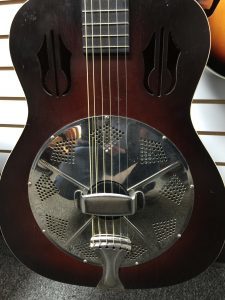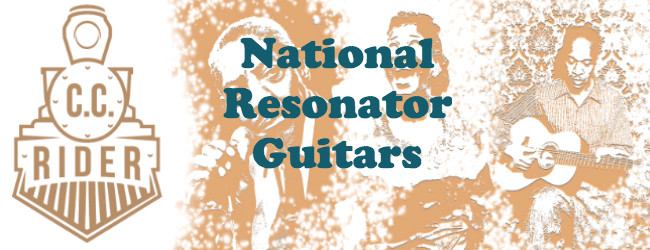This is the latest from The Bluesmobile’s C.C. Rider, who spends her life venerating the founding fathers of the blues. She’s walked the crooked highways of this singing country to resurrect the voices of the past. With the dirt of the Delta on her hands, she sleeps in the shadow of the giants on whose shoulders popular music now stands.
 National Resonator Guitars
National Resonator Guitars
In the early ‘20s a Vaudeville guitar player named George Beauchamp paid a visit to a stringed instrument shop. His complaint: no matter how loud he played, his guitar just couldn’t compete with the rest of the instruments in the orchestra.
So, the owner of that shop, John Dopyera, developed the idea of fitting a guitar body with aluminum cones. Discs of fine-spun aluminum that vibrate to amplify sound. Make the body out of metal, and you’ve got a National guitar.
Hawaiian guitarists picked them up initially, but it was the blues that took it to the next level.
Tampa Red was the first African-American player to record with a National. He developed a clean bottleneck style on his gold-plated style 4 Tricone. With three resonator cones in this model, he hits us with a lot of single-string sweet sustain.
Bo Carter, Blind Boy Fuller, many of the most iconic bluesmen played a National guitar. Then there were folk who’d treat it a little rougher. Like Bukka White, for instance.
Bukka liked the metal body cause it was loud, but mostly cause it was tough. Any old wood guitar would have broken. He’d say, “This one can take rain and punishment.” “I don’t play ‘em. I stomp ‘em.”
Here he is in 1937 stomping on the song that got him out of Parchman Farm Prison—evidently the Governor of Mississippi was a fan. On his National Guitar—Bukka White with Shake ‘Em On Down.



